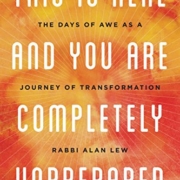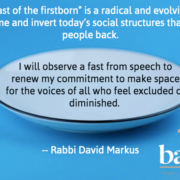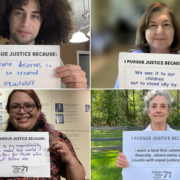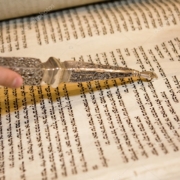Emor: Extending Family
Emor: Extending Family
Part of an ongoing series that explores Torah through an ethic of social justice and building a world worthy of the Divine.
.דַּבֵּ֛ר אֶל־בְּנֵ֥י יִשְׂרָאֵ֖ל לֵאמֹ֑ר בַּחֹ֨דֶשׁ הַשְּׁבִיעִ֜י בְּאֶחָ֣ד לַחֹ֗דֶשׁ יִהְיֶ֤ה לָכֶם֙ שַׁבָּת֔וֹן זִכְר֥וֹן תְּרוּעָ֖ה מִקְרָא־קֹֽדֶשׁ
Speak to the Children of Israel, saying: In the seventh month, on the first of the month, there shall be a rest day for you, a mention of shofar blasts, a calling of holiness.
Leviticus 23:24
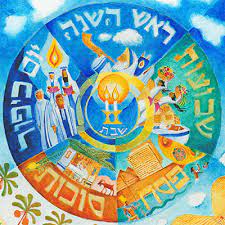
Image: Darius Gilmont
Being related to someone is not as simple as you might think. Indeed, you might call it relative. For example, the Kohen who is normally forbidden from contact with dead bodies has a limited list of just seven types of “קרובים – relatives” he is permitted to approach and prepare for burial, because they are considered his biological family. Alternatively, if someone dies without familiar relatives to attend to their burial needs, then we are all seen as eligible family, under the rubric of soul relatives – מת מצוה הכל קרוביו.(1)
In life, too, feeling connected or partnered with someone can take many forms, and scripture reflects the varying degrees of appropriate proximity with specific language that marks the corresponding level of holiness. In this week’s Torah portion the word “(2) זִכְר֥וֹן – zichron – a mentioning”, makes one of only three appearances in Tanach.(3) In each case, memory and connection are specifically evoked in the context of coming together in community.
In Emor, G-d tells Moshe to instruct the Children of Israel concerning Rosh Hashanah, describing the festival as “זִכְר֥וֹן תְּרוּעָ֖ה מִקְרָא־קֹֽדֶשׁ – a mention of shofar blasts, a calling of holiness.” The source of this holiness is in the calling of togetherness.(4) The Hebrew word for “shofar blasts – תְּרוּעָ֖ה – truah” is drawn from the language of affection and friendship,(5) sharing the root of “לְרֵעֲךָ֖” in “loving your neighbor as yourself”.(6) Only when there is loving attachment among those gathered will their experience be called “holy.”(7)
Also noteworthy is King Solomon’s use of the word “זִכְר֥וֹן” to mark the limitations of only including folks superficially “אֵ֥ין זִכְר֖וֹן לָרִאשֹׁנִ֑ים וְגַ֨ם לָאַחֲרֹנִ֜ים – as there is no mention of former ones, also, of the latter ones”(8) while warning of connecting too deeply with negative influences “אֵ֨ין זִכְר֧וֹן לֶחָכָ֛ם עִֽם־הַכְּסִ֖יל – there is no mention of the wise with the fool”.(9) It is the care and respectful desire to connect with another that unites and brings people together, not the physical co-occupation of space or shared genetics.
Rosh Hashanah was the day that G-d first put a soul into a body, and as a day of judgment, it reminds us of G-d’s expectations to use them both properly. The word “תְּרוּעָ֖ה” alludes to our purpose in this world as a connector of heaven and earth, sharing the numerical value of “שמים ארץ – heaven & earth.” (10) The Chidushie HaRim explains the words of King David. (11) “As for the heavens, the heavens are HaShem’s; but the earth has been given to humanity” to mean that the earth has been given to us to elevate it to a heavenly status for God.
We are equally called to sanctify the body as a suitable home for our souls. Each originated in, and will return to, a different domain. When we allow the body to act independently of the soul, it reinforces the limited nature of the physical as distinct and separated. Conversely, the essence of spirituality is expansive and unifying.
Through its intentional performance, each mitzvah (12) brings us, both body and soul, closer to the One who commanded us. As long as we are alive we have the constant opportunity to sanctify the body through spiritual practice. In death, when the body can no longer contain the soul and the two parts of ourselves become separated, then the body (meis) itself becomes the mitzvah. Instead of being driven by its own pursuits, the body now relies on the will of others to come and provide a cleansing and purification through the ritual of tahara.
Teshuvah – repentance, is a return to the singular unity of humanity as experienced in the garden before there was sin. (13) Aspiring towards a prelapsarian state is one of the reasons that we don’t mention our transgressions on Rosh HaShanah, but rather model the restoration with our commitment to take care of each other. As an annual day of judgment, Rosh Hashanah prepares us for our ultimate day of judgment. Our success will be determined by the extent that we have bound ourselves to the eternal goodness that is found in the collective.
Listening to the wailing of the shofar invites us to judge for ourselves whether we have heard the cries of others and answered the call. When it comes to being there for someone else, we are all family.
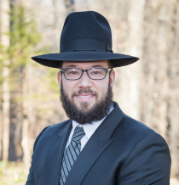
Rabbi Mike Moskowitz, a founding builder at Bayit and also a member of Bayit’s Board, serves as Scholar-in-Residence for Queer and Trans Jewish Studies at Congregation Beit Simchat Torah, a flagship LGBTQIA+ synagogue in New York City.
Endnotes
- See Toras HaRemez
- Closely related to zikaron – remembering.
- See Baal Haturim.
- See Rashi on Numbers 10:2.
- See Rashi on Numbers 23:21 “לְשׁוֹן חִבָּה וְרֵעוּת”.
- Leviticus 19:18.
- See Chamra Tava for an expanded explanation as well as the Rosh who distinguishes “with” and “also”.
- Ecclesiastes 1:11.
- Ecclesiastes 2:16.
- See Ahavas Yisroel.
- Psalms 115:16.
- The root of “mitzvah” is צותא, meaning connected.
- See Chesed L’Avraham.


